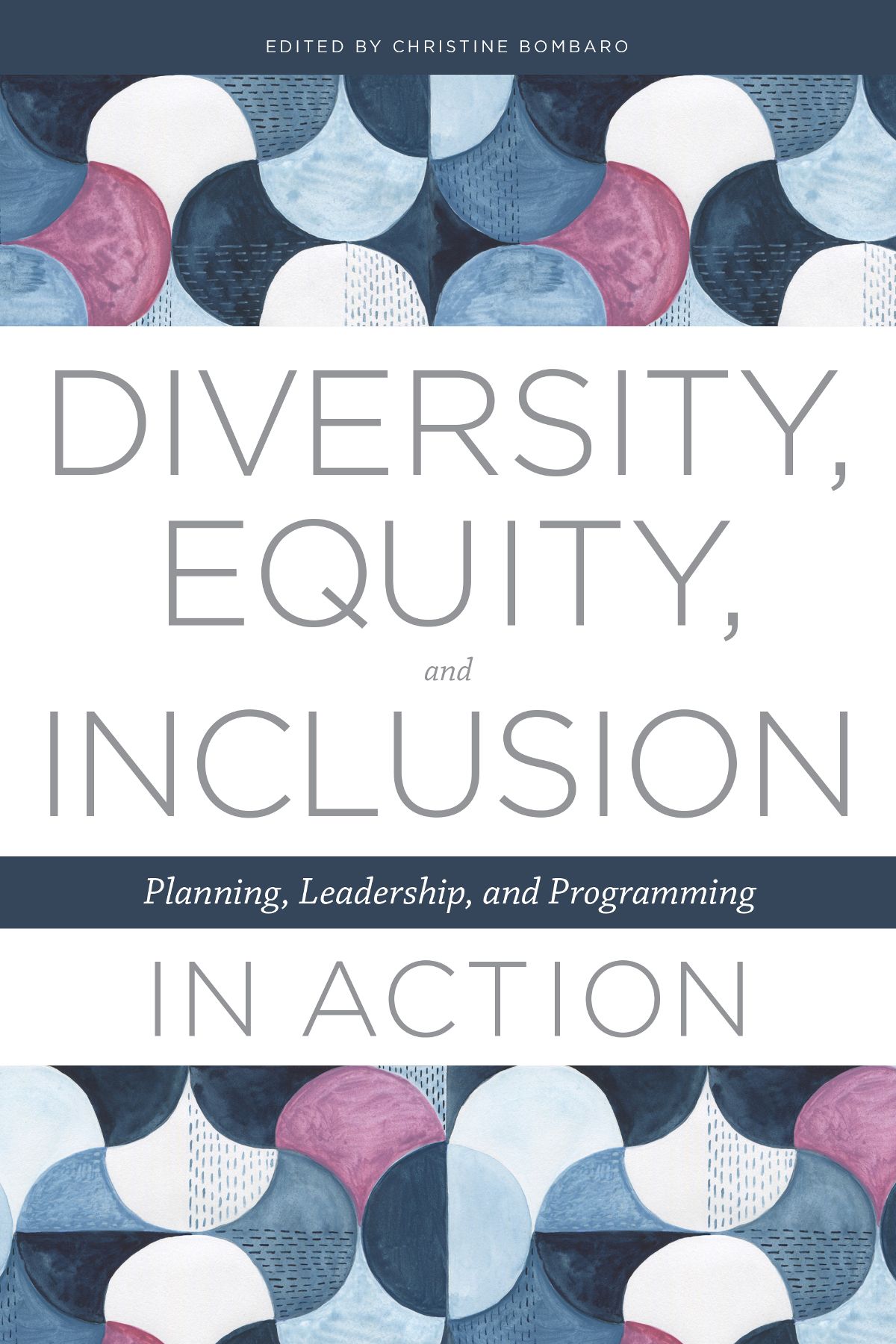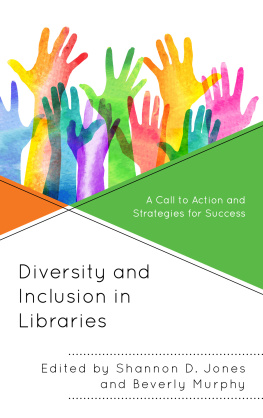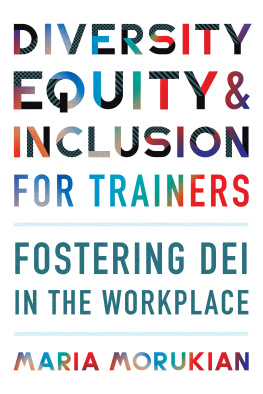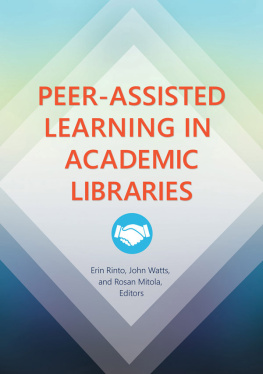
ALA Editions purchases fund advocacy, awareness, and accreditation programs for library professionals worldwide.

CHRISTINE BOMBARO is an associate director at Dickinson College, where she develops and manages the Waidner-Spahr Librarys multiple award-winning information literacy programs. She is the author of the textbook Finding History: Research Methods and Resources for Students and Scholars and is the coauthor of Forgotten Abolitionist: John A. J. Creswell of Maryland. Her work on research pedagogy has been featured in numerous edited books and journals, such as Reference Services Review, and she presents regularly at conferences and workshops on topics related to information literacy. Bombaro is an alumna of the Harvard Graduate School of Educations Leadership Institute for Academic Libraries and the Association of College and Research Libraries Information Literacy Immersion program. She earned her bachelors degree in history and secondary teaching certification from Dickinson College and her masters degree in library science from Drexel University.
2020 by Christine Bombaro
Extensive effort has gone into ensuring the reliability of the information in this book; however, the publisher makes no warranty, express or implied, with respect to the material contained herein.
ISBNs
978-0-8389-4759-3 (paper)
978-0-8389-4836-1 (PDF)
978-0-8389-4837-8 (ePub)
978-0-8389-4968-9 (Kindle)
Library of Congress Cataloging-in-Publication Data
Names: Bombaro, Christine, 1971- editor.
Title: Diversity, equity, and inclusion in action : planning, leadership, and programming / edited by Christine Bombaro.
Description: Chicago : ALA Editions, 2020. | Includes bibliographical references and index. | Summary: This book offers thought-provoking ideas and actionable advice from librarians who have implemented replicable and scalable initiatives that have helped their institutions understand and address issues surrounding the concepts of diversity, equity, and inclusionProvided by publisher.
Identifiers: LCCN 2020009882 | ISBN 9780838947593 (paperback) | ISBN 9780838948378 (epub) | ISBN 9780838948361 (pdf) | ISBN 9780838949689 (kindle)
Subjects: LCSH: Libraries and minoritiesUnited States. | Academic librariesServices to minoritiesUnited States. | Minority library employeesUnited States. | Diversity in the workplaceUnited States. | Academic librariesUnited StatesSociological aspects. | Academic librariesUnited StatesCase studies. | Social justiceUnited States.
Classification: LCC Z711.8 .D577 2020 | DDC 027.6/3dc23
LC record available at https://lccn.loc.gov/2020009882
Cover design by Kimberly Thornton. Images Adobe Stock.
For Eleanor Mitchell, who persistently but gently urged me to do this.
Contents
MATTHEW P. CISZEK
PAMELA ESPINOSA DE LOS MONTEROS AND SANDRA ENIMIL
OROLANDO A. DUFFUS, TIFFANY N. HENRY, AND STACEY R. KRIM
JOE KOHLBURN AND TRACY GOMILLION
MOLLY HIGGINS AND RACHEL KEIKO STARK
ANNA SANDELLI, JANELLE COLEMAN, AND THURA MACK
STACEY R. KRIM, DAVID GWYNN, AND ERIN LAWRIMORE
EDUARDO M. TINOCO AND WIN SHIH
KARLA FRIBLEY, AMY BRYANT, JOS-IGNACIO PAREJA, BONITA WASHINGTON-LACEY, AND NEAL BAKER
ANDREA BARUZZI, PAM HARRIS, AND ROBERTO VARGAS
T he ponderous pace at which institutions of higher education are moving toward achieving a state of social justice may be one of the most challenging problems academia has ever faced. For many decades in the United States, academic communities have been making sustained efforts to educate their communities about the necessity for diversity and to attract a diverse population of students and staff to their campuses. However, lacking intentional plans to ensure that equity and inclusion are also deeply embedded in an institutions identity, those individuals recruited as diversity representatives to otherwise non-diverse communities have often experienced inequity and exclusion from the dominant populations. This problem continues to plague higher education. Academic libraries, often considered to be bastions of liberal ideology due to, for example, their work preserving intellectual freedom, opposing censorship, and advocating for equal access to information and education for the greater good of society, are not immune from societal and institutional inequities.
Librarians have in recent years begun expressing commitmentboth personally and institutionallyto the ideals of diversity, equity, and inclusion (DEI). Diversity standards have even been codified by our national organizations.
The slow pace of achieving a state of social justice may indicate that liberalism in librarianship, at least institutionally, is something of a myth. There is a wealth of professional literature revealing that leaders in higher education are aware of the injustices wrought on their campuses that affect how students and staff members are treated, what opportunities they may or may not be privy to, and what barriers stand in the way of their learning experiences and future careers. Yet these same institutions of higher education, with their libraries being no exception, continue to struggle to find ways to make their environments welcoming and equitable to all those who learn and work there.
Part of the problem in addressing DEI issues starts with terminology and perception. The term diversity in itself does not and cannot capture the many forms that diversity may take, let alone the essence of social justice. A diverse environment is not easily recognizable if one relies solely on visual cues and associations with which individuals might be willing to openly identify. A diverse population may consist of those with permanent or temporary differences in physical abilities, mental and emotional changes, ideologies, financial statuses, and personal experiences. However, Hudson argues that diversity discussions have been largely centered on race, and further, that some solutions to the diversity problem have the effect of further homogenizing populations through assimilation, cooptation, or more complex strategies of inclusive control.
Morales, Knowles, and Bourg differentiate diversity from social justice in libraries by explaining that diversity encompasses ground-level efforts to improve services, collections, and staffing challenges, while social justice addresses power and privilege on a structural level, as well as at the level of mere representation. When considered in this light, it becomes obvious that the move toward social justiceespecially when limited by physical and conceptual boundaries such as a library and its working environmentcannot lend itself to few, simple, uncontroversial, and cheap solutions.
Many colleges and universities in the United States have been attempting to increase diversity on their campuses by recruiting students and employees from underrepresented groups, according to whatever underrepresented means to each population. Diversity cannot be achieved without a diverse population; however, it is also generally understood that an increase in the population of physically recognizable underrepresented groups does not on its own create diversity, nor does it improve equity and inclusion. When implemented without context and without concerted community outreach, communication, and programming, attempts to increase diversity may increase feelings of isolation and inequity experienced by individuals in minority groups who must navigate systems from within the long-established majority norms and expectations; this may ultimately result in those newer members of the community leaving it.
Next page









